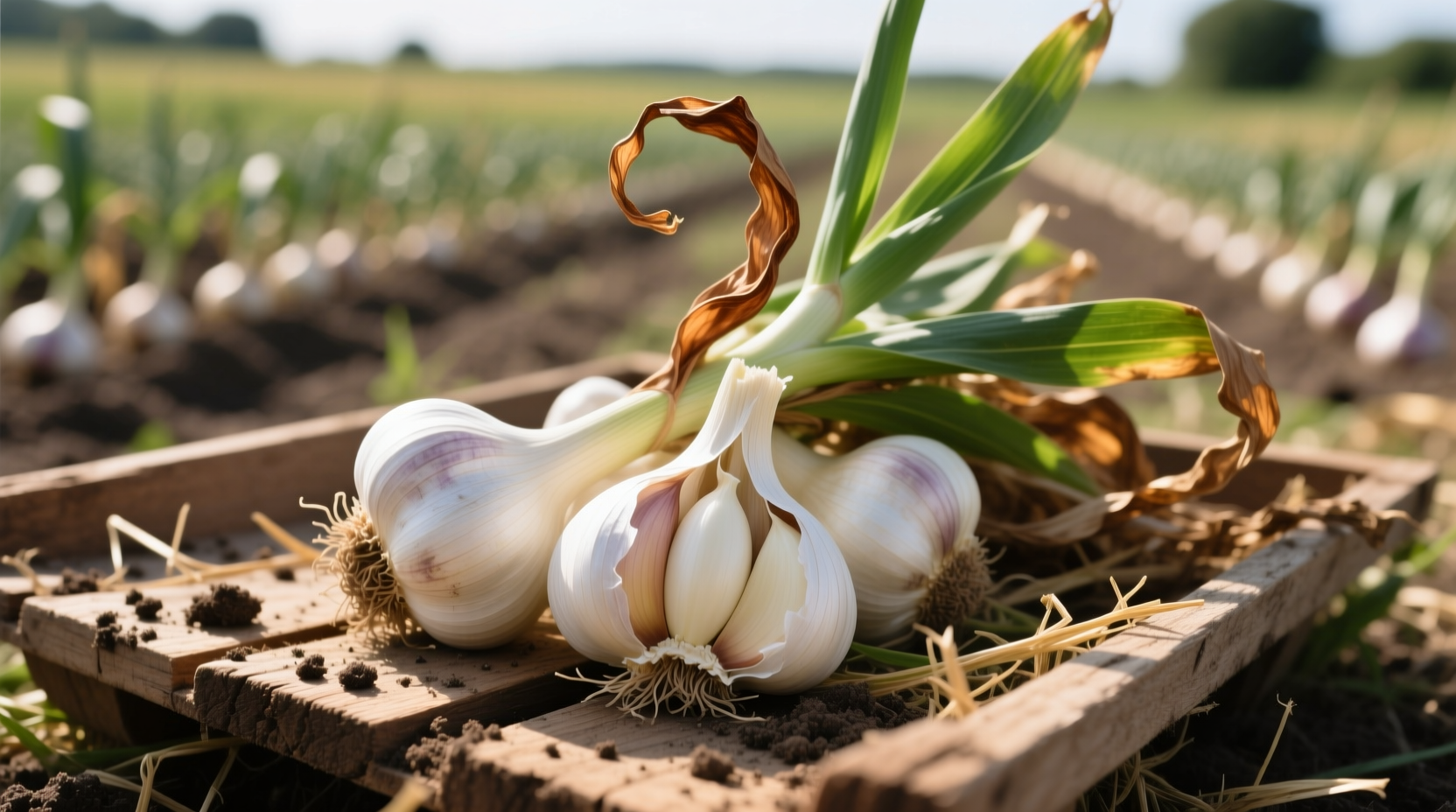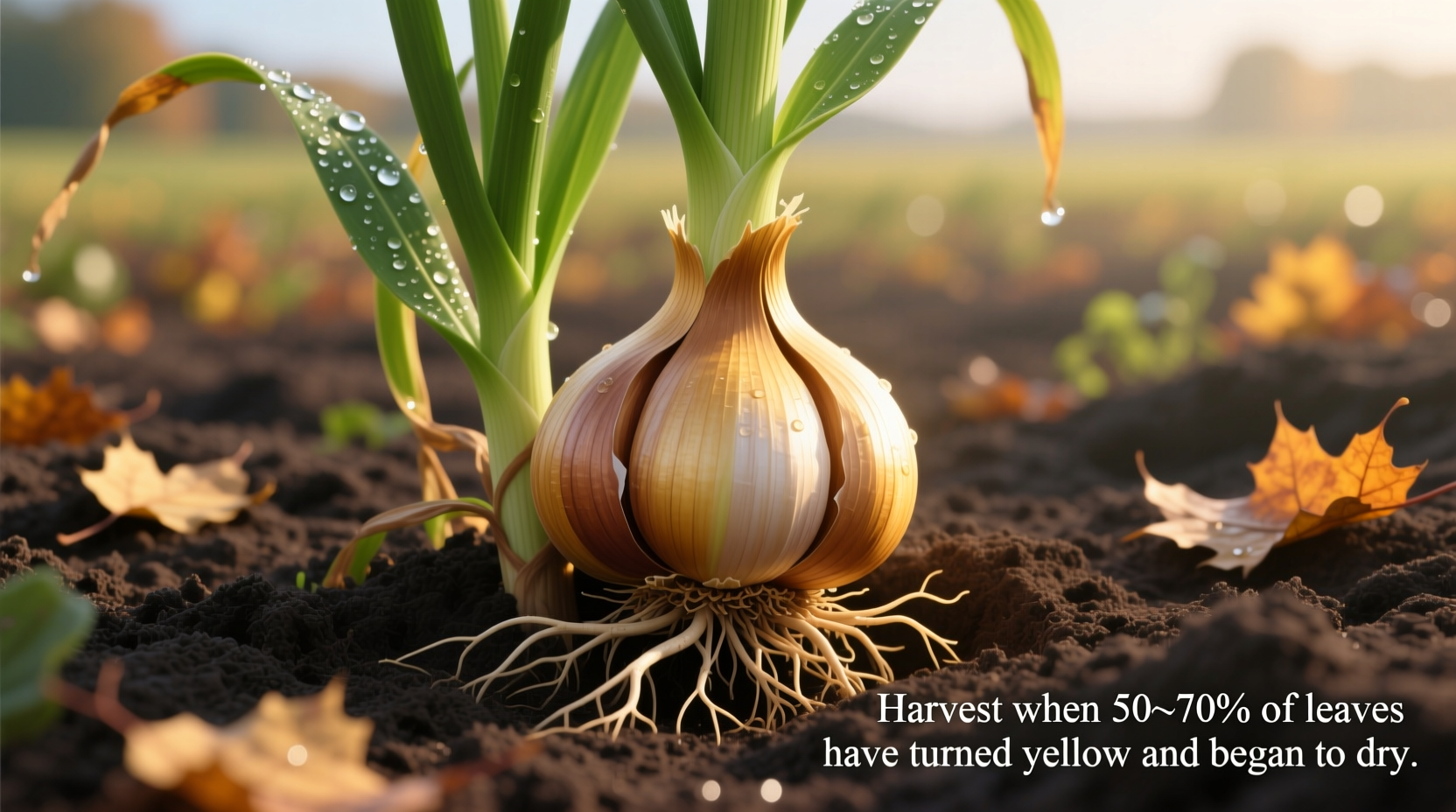Harvest fall-planted garlic when approximately 40% of the leaves have turned brown while 60% remain green, typically between late May and mid-July depending on your climate zone. This timing ensures fully developed bulbs with proper wrapper layers for storage.
Knowing exactly when to harvest garlic planted in fall separates successful gardeners from those with disappointing yields. Get this timing wrong, and you'll end up with underdeveloped cloves or bulbs that won't store properly. As someone who's grown garlic across multiple growing zones, I've learned that precise harvest timing makes all the difference between a bountiful harvest and wasted effort.
Why Garlic Harvest Timing Matters
Garlic requires precise harvest timing because the plant continues developing bulb size until the leaves begin dying back. Harvest too early, and your bulbs won't reach full size with proper protective wrappers. Wait too long, and the bulbs may split open, reducing storage life. According to research from the University of Minnesota Extension, garlic bulbs reach maximum size when approximately 40% of the foliage has senesced (turned brown).
Key Visual Indicators for Harvest Readiness
Don't rely solely on calendar dates—your garlic's appearance provides the most reliable harvest signals. Watch for these critical indicators:
| Indicator | Optimal Condition | What It Means |
|---|---|---|
| Leaf Color | 40% brown, 60% green | Bulbs have fully developed with protective wrappers |
| Leaf Texture | Lower leaves dry and papery | Natural senescence process is underway |
| Wrapper Condition | Tight, intact covering | Protects cloves during storage |
| Clove Definition | Distinct individual cloves | Bulb has fully segmented |
Regional Harvest Timing Guidelines
While visual cues are most reliable, these regional timelines provide helpful reference points for determining when to harvest garlic planted in fall:
- Southern Zones (7-10): Late May to early June
- Mid-Zones (5-6): Mid to late June
- Northern Zones (3-4): Early to mid-July
The Oregon State University Extension Service notes that hardneck varieties typically mature 1-2 weeks before softneck varieties in the same region. If you're growing both types, check hardnecks first.
Step-by-Step Harvesting Process
When your garlic shows the proper visual indicators, follow these steps for optimal results:
- Check soil moisture: Harvest when soil is dry (not wet from recent rain)
- Loosen soil: Use a garden fork to gently lift bulbs from beneath, 6-8 inches from the plant
- Lift carefully: Pull plants straight up without jerking to avoid separating bulbs from stems
- Handle gently: Avoid bruising bulbs which leads to early spoilage
- Keep stems intact: Leave stems attached for proper curing

Avoid These Common Harvest Mistakes
Many gardeners make these critical errors when harvesting fall-planted garlic:
- Harvesting based solely on calendar dates without checking plant indicators
- Waiting until all leaves have died back, causing bulbs to split open
- Leaving bulbs in the ground too long after maturity, inviting soil pathogens
- Using excessive force when pulling, damaging bulb wrappers
- Cutting stems too short before curing, reducing storage life
According to agricultural research from Penn State Extension, garlic bulbs left in the ground too long after maturity can lose up to 30% of their potential storage life due to premature wrapper deterioration.
Proper Curing Techniques for Maximum Storage
Harvest timing is just the beginning—proper curing determines how long your garlic will last:
- Hang in small bundles (6-12 plants) in a dry, shaded, well-ventilated area
- Maintain temperatures between 70-80°F (21-27°C) with good air circulation
- Cure for 2-4 weeks until outer wrappers are crisp and necks are fully dry
- Trim roots to ¼ inch and stems to 1-2 inches after curing completes
For those wondering how to tell when garlic is properly cured after harvest, the bulbs should feel firm, wrappers should be dry and papery, and you should hear cloves shifting slightly when gently squeezed.
Storage Guidelines for Long-Term Preservation
After proper harvest and curing, store your garlic under these conditions:
- Temperature: 32-40°F (0-4°C) for longest storage
- Humidity: 60-70% relative humidity
- Ventilation: Allow air circulation around bulbs
- Container: Mesh bags, baskets, or paper bags (never plastic)
Under ideal conditions, properly harvested and cured hardneck garlic stores 4-6 months, while softneck varieties can last 8-12 months. The University of Illinois Extension confirms that storage temperature is the most critical factor affecting garlic longevity—warmer temperatures dramatically reduce shelf life.











 浙公网安备
33010002000092号
浙公网安备
33010002000092号 浙B2-20120091-4
浙B2-20120091-4